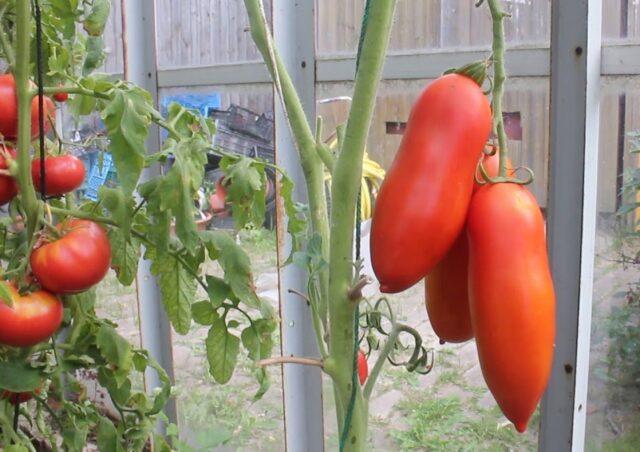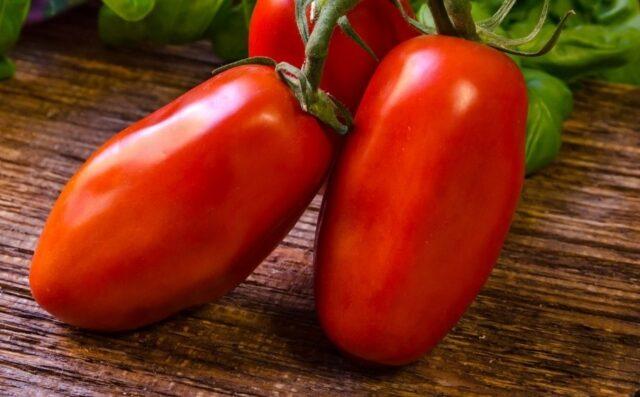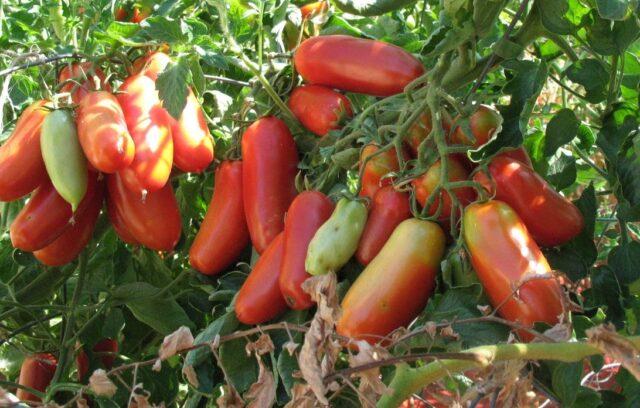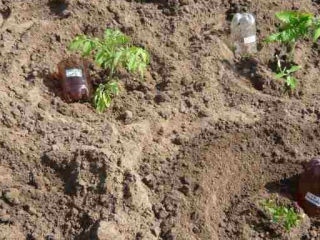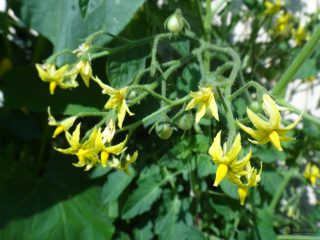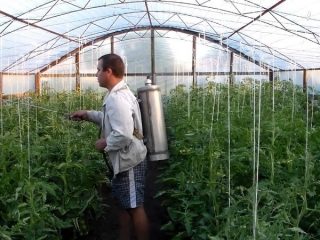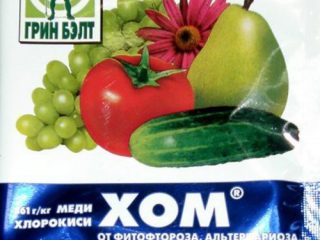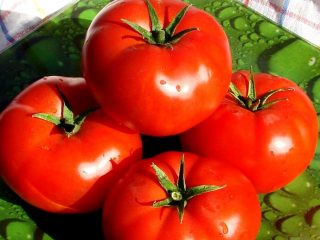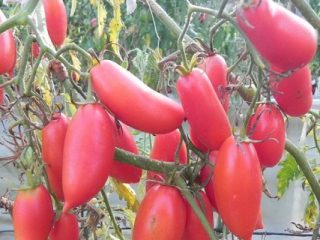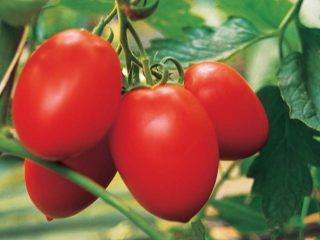Content
Tomato San Marzano is an Italian variety that is suitable for home and professional cultivation. It is valued for its high and stable yield in seasons when other species perform poorly. Gardeners also note the excellent taste of the tomato and its suitability for transportation and long-term fresh storage. In order for the crop to meet the declared characteristics of the variety, it is necessary to properly plant and provide care taking into account the basic requirements of the crop.
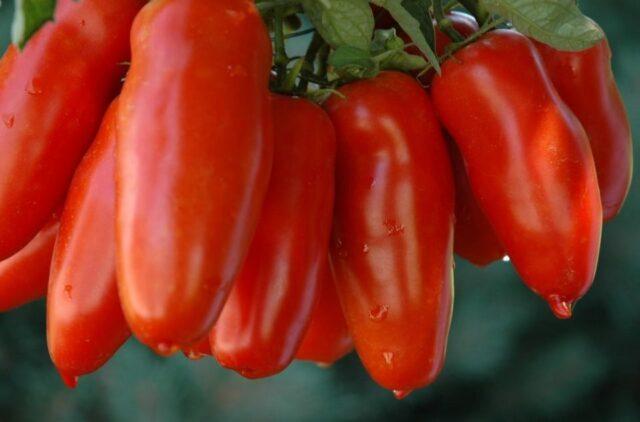
San Marzano tomatoes in Italy are used to make Vera Pizza Napoletana
History of appearance
It is unknown who developed this type of tomato. But there is an assumption that the seeds of this variety arrived in Naples in 1770 as a gift from Peru. The tomatoes were planted in the small town of San Marzano sul Sarno in volcanic soil near Mount Vesuvius. As a result, this variety became famous throughout the world.
But over time, breeders have significantly improved its characteristics.This made it possible to grow this species in many countries. The San Marzano variety was officially registered in 1926. But it, like its varieties, is not included in the State Register of Russia.
Description of the tomato variety San Marzano
This species is a cultivar. This means that its seeds are suitable for further sowing, and the seedlings fully retain their species properties. San Marzano is an indeterminate variety. Its fruiting period is long, until autumn.
The height of the bushes reaches 1.2-1.5 m, and in closed ground conditions up to 2 m. The plant needs to be tied to a support as it grows. The shoots are thickened, strong, medium leafy. San Marzano regularly forms stepsons that need to be removed.
Leaves have a standard shape and medium size. Their shade is light green. The inflorescences are simple. The first fruit cluster is placed above the 5-6th plate, and then after two. Each of them produces 6-8 tomatoes.
San Marzano is a mid-season variety. The first tomatoes on the plant ripen 107-115 days after the appearance of friendly shoots. The tomatoes are shaped like a “longo”, that is, in the form of an elongated cream. Tomatoes in one bunch are almost the same size. The average weight ranges from 120-130 g, and the length is 10-12 cm. In total, 10-12 fruit clusters are formed on the plant per season.
When ripe, tomatoes acquire a rich, uniform red hue. There is no green spot in the stalk area. The pulp is fleshy, moderately dense, juicy. When you cut a tomato, the juice does not flow out. The seeds are small. The taste is sweet, with a rich tomato aroma. But with a lack of sunny days, the fruits become sour. The skin is dense, thin, and when eaten it is practically not felt.Ripe tomatoes do not fall off the branches.
Based on this variety, other varieties were bred, which have certain differences.
Among them:
- Tomato San Marzano Nano. Low-growing, early-ripening variety. The first fruits ripen after 80 days. The height of the bushes is 50 cm. Does not require pinching or tying. Tomatoes in the form of an elongated red cream. Average weight 80-100 g.
In San Marzano Nano, the tip of the fruit is round and sharp
- Tomato San Marzano Redorta or Retorta (San Marzano Redorta). Large-fruited, tall variety, medium ripening period. The weight of pepper tomatoes reaches 350 g. A salad variety. San Marzano Retort tomatoes are up to 15 cm long. They are fleshy, sweet, with a pleasant tomato aroma.
San Marzano Redorta has a long fruiting period
- Tomato San Marzano 2 (San Marzano 2). Early indeterminate variety. Tomatoes ripen in 80-85 days. High-yielding species. The bushes are powerful, strong, 180 cm high. Each fruit cluster produces 8-10 tomatoes. Pepper-shaped tomatoes, red, weighing 80-100 g.
Shoots of San Marzano 2 with short internodes
- Tomato San Marzano giant 3 (San Marzano Gigante 3). An indeterminate variety, the height of the bushes reaches 1.2-1.5 m. The fruits have the shape of an elongated cream and, when ripe, acquire a dark red uniform color. The average weight of tomatoes is 90-150 g.
San Marzano giant 3 has a balanced, pleasant fruit taste
Characteristics of the San Marzano tomato
To get a complete picture of the classic appearance of this tomato, you need to familiarize yourself with its characteristics.This information will also allow you to compare the productivity of San Marzano with other varieties.
Tomato yield San Marzano
This species is characterized by high productivity. The variety is not susceptible to temperature changes, thanks to this it bears fruit consistently. From a bush you can collect 8-10 kg of marketable tomatoes.
Resistance to diseases and pests
The variety is not susceptible to crown rot and fusarium. But it does not have increased resistance to anthracnose and late blight. The Colorado potato beetle can cause damage to seedlings at the initial stage of development.
Methods of application
The variety is ideal for fresh consumption and processing. The size of the fruit allows them to be used for whole-fruit canning. Tomatoes are also suitable for making sauce, pasta, and winter preparations. The harvest can be used for drying and freezing.
Advantages and disadvantages
This variety of tomatoes has many advantages, for which it has become widespread not only in Italy, but also in other countries of the world. However, it also has certain disadvantages that you need to pay attention to.
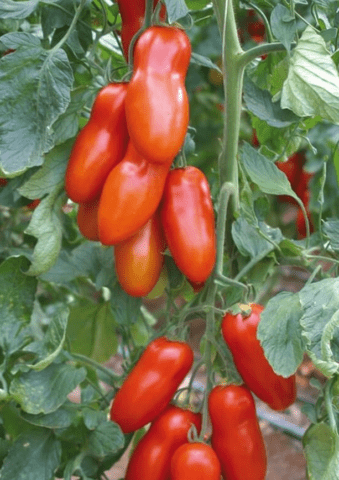
The yield of marketable tomatoes for the San Marzano variety is 85-95%
Main advantages:
- stable yield;
- immunity to temperature changes;
- excellent taste;
- the crop can easily be transported;
- tomatoes do not crack or fall off;
- resistance to fusarium and blossom end rot.
Flaws:
- needs stepsoning;
- requires tying to a support.
Features of planting and care
It is recommended to grow San Marzano using seedlings. By the time the seedlings are planted in a permanent place, they should be 60-65 days old.Taking this into account, sowing should be carried out in mid-March.
On days 5-7, at a temperature of +23-25 °C, friendly shoots appear. When the seedlings grow 2-3 true leaves, they need to be planted in separate containers.
You can transplant seedlings into a greenhouse at the end of April, and into open ground in mid-May, when the threat of return frosts has passed and the soil has warmed up well. The recommended planting pattern is 50 by 50 cm.
The species is not susceptible to short-term lack of moisture in the soil. You need to water the tomatoes when the soil dries to a depth of 5 cm. To do this, use settled water at a temperature of +20 °C.
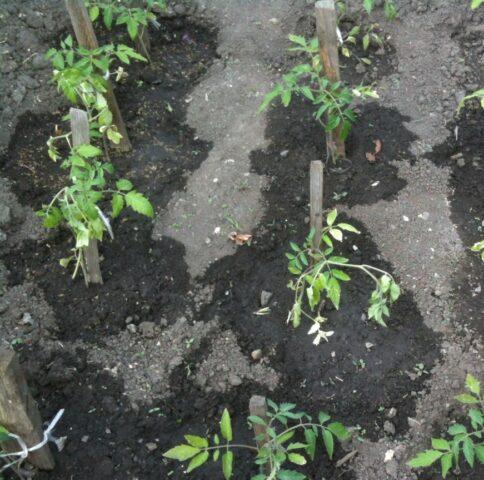
Watering should be carried out at the root so that moisture does not fall on the leaves.
Tomatoes need to be fed four times. Fertilizers should be applied first when the seedlings take root in a new place, and then ten days after that. At this time, organic matter or nitrogen-containing mineral fertilizers are relevant. The third and fourth feeding should be done during flowering and fruit ripening. During this period, it is important to use phosphorus-potassium mixtures.
Pest and disease control
To prevent fungal diseases from affecting San Marzano tomatoes, it is recommended to treat the seedlings two weeks after rooting with a systemic fungicide: Ridomil Gold, Quadris, Revus. And then, as a preventative measure, re-spray the bushes every ten days, but no later than three weeks before harvest.
You can protect tomatoes from the Colorado potato beetle if, before planting in a permanent place, place the seedlings in a solution of Aktary or Previcura Energy for half an hour.
Conclusion
The San Marzano tomato is a variety that has not lost popularity even despite the huge number of new species. This is due to stability and high yield. At the same time, growing it does not cause any particular difficulties, and the resulting harvest, provided cool conditions are provided, can be stored for up to two months without loss of consumer qualities.
Reviews from gardeners about the San Marzano tomato

